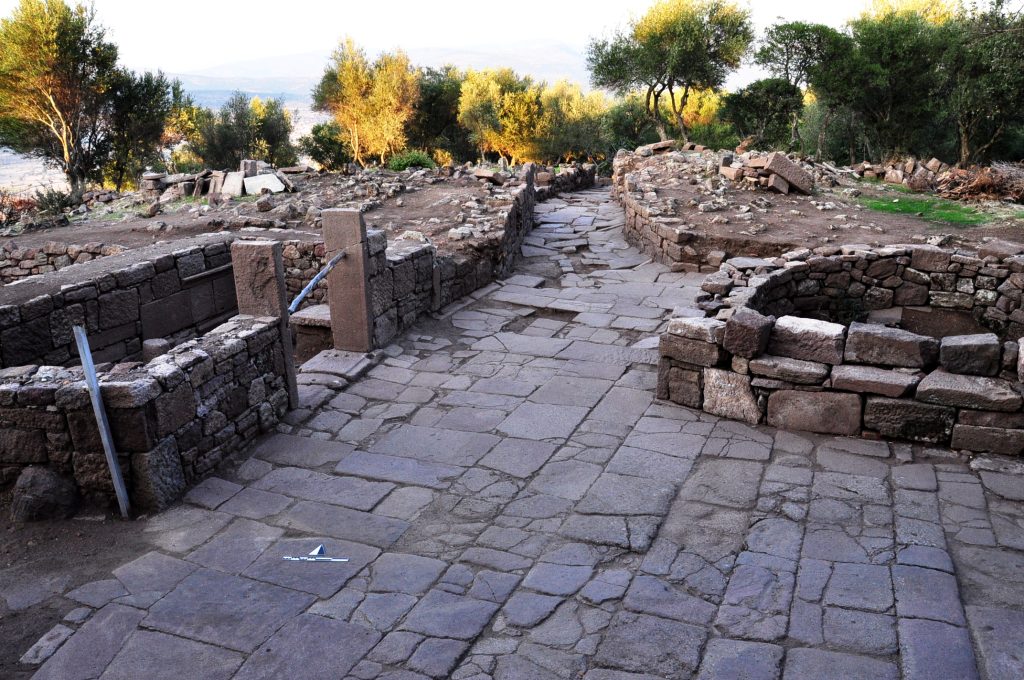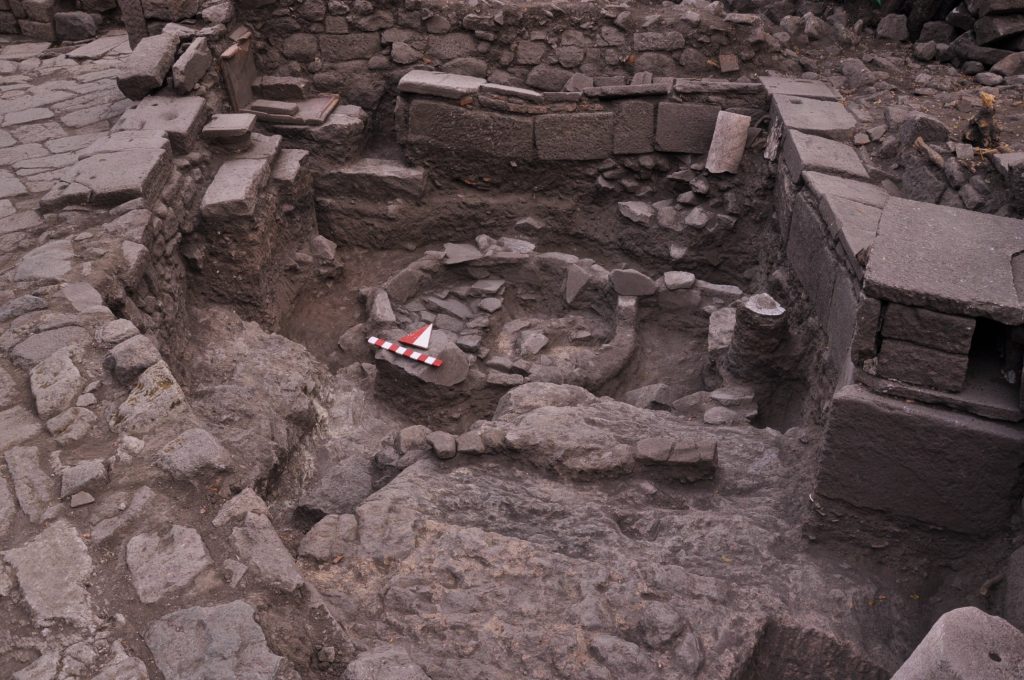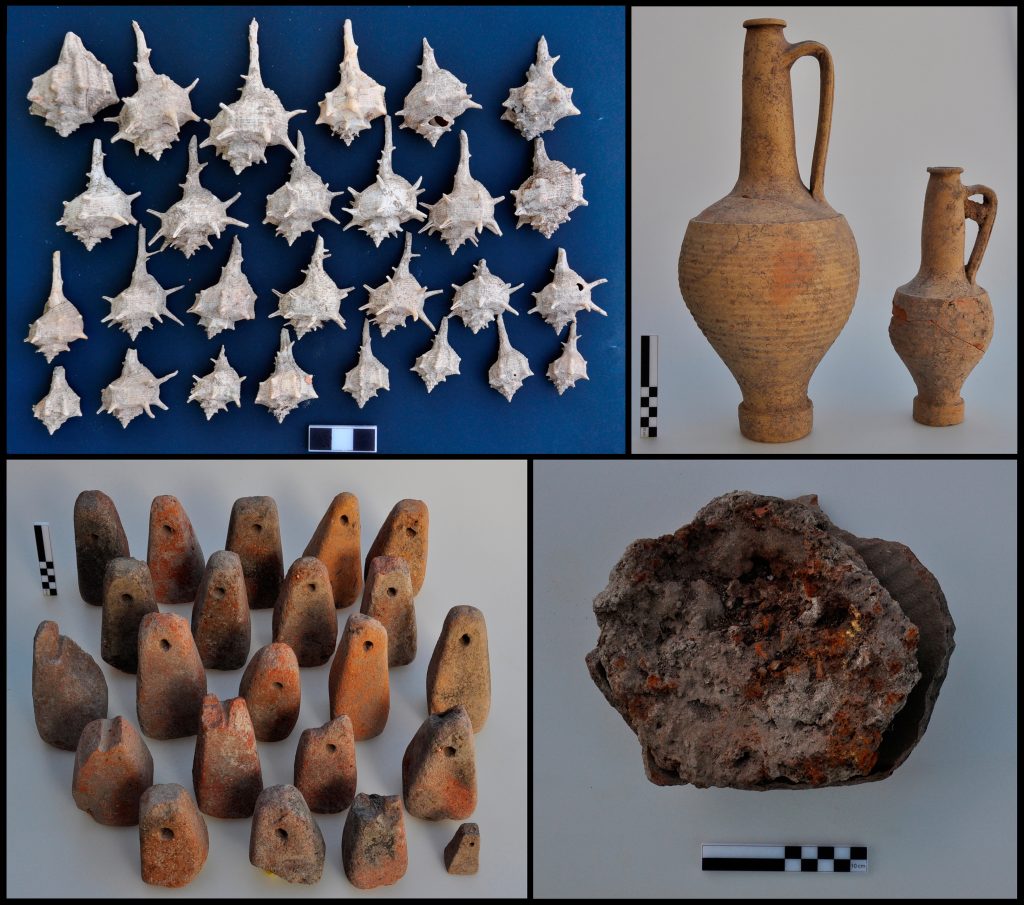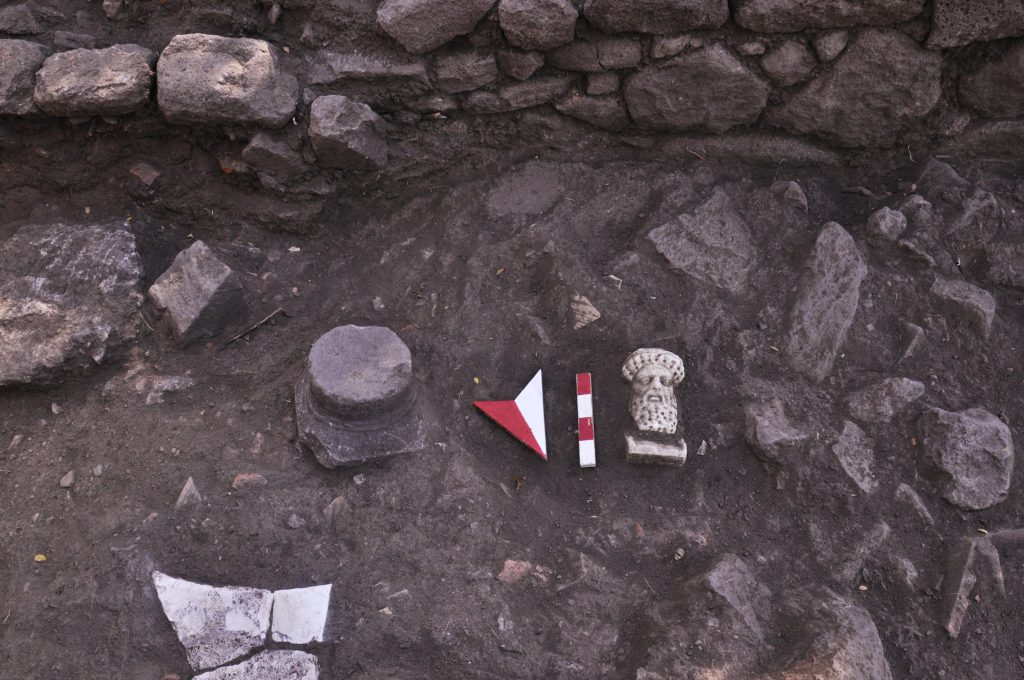
The first structure that every visitor who follows the ancient road from the Necropolis (cemetery area) to the city is the city gate named Gate of Agora Street. We see a small quarter that welcomes you with its coolness at a point facing the north wind, after the door. The area, called the Industrial Quarter, had been hosted many masters and merchants until about 1800 years ago. The industrial quarter, with a width of approximately 950 m2, had considerable size for that period. The industrial quarter named “Insula 1” offers very important information on the ancient economy and industrial production.

Twenty-eight workshops operated by different guilds were unearthed during the studies carried out by the excavation team between 2012 and 2015. Most of them, which are generally two-story, consist of rooms that are directly or indirectly connected to each other. They were both workshops where production is carried out and warehouses where raw materials and products are preserved. At least one cistern is situated in each of the four large courtyards within the complex structure of the quarter. This situation shows the existence of an organizing mechanism in the area where more than one guild is accommodated. The reflections of the astonishing engineering applied in the city, where water needs are met with about two hundered cisterns, can be seen in the industrial quarter. The terracotta pipes passed through the wall of buildings were used to transfer the rainwater falling on roofs to cistern in almost every building. The overflown water from the cisterns was transferred to other cisterns with the help of terracotta pipes, in order to prevent waste. The storage of water, which is the vital source of humanity on a hill without water resources, with is undoubtedly an organization to be appreciated.

Archaeological data shows that more than one production branch had located in the industrial quarter. Hand mills and mortars of various shapes indicate that flour is made from grain, and the production equipment used for crushing purposes indicates olive oil production. Large containers used for liquid storage or as separation tanks were found next to production equipments in some workshops. Numerous cisterns in the area met the need for clean water especially in olive oil production.

Parchment is another product that people of Aigai were interesting in, besides weaving, in which they were quite effective due to their goat herds. An important portion of the parchment, which was invented by the people of Pergamon in the Hellenistic Period that Pergamon needed, must have been produced in Aigai. The latrina, which is put into service of the workers in the industrial quarter, was unearthed. The urine accumulated in the rectangular urinals formed by roof tiles was collected in a large pithos in the corner of the space and later used in the tanning of the leather in parchment production. Another production branch was the production of bone objects. The processed and semi-processed bone objects and production residues found in a cistern that lost its function and turned into a garbage pit were the traces of an artisan who carried out this activity.

A room in the industrial quarter is distinguished from the others with its elaborate workmanship. It has stone benchs on both sides of the room for the visitors / merchants to sit. Inside the place, which is understood to be decorated with mosaics, more than a hundred bronze coins were found remained from commercial activities. In addition, a marble bust of Hermes, believed to be the protector god of roads, merchants and travelers, was found. All this information suggests that there was an exhibition and sales hall connected to the industrial quarter. Also, a blacksmith’s workshop, understood to have been operated in earlier periods (6th century BCE), was unearthed at the layers below this structure. This discovery shows that the industrial quarter in Aigai has a centuries-old tradition.

